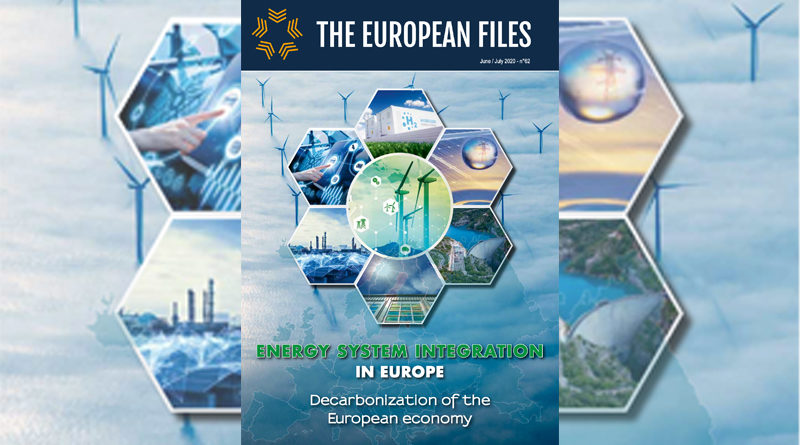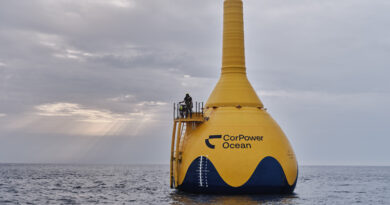
Energy system integration in Europe – Decarbonization of the European economy
The current crisis brought about by COVID-19 has strongly impacted our economic activity and has put all sectors in dire straits. The green recovery put forward and advocated for by the Commission in May, focuses on speeding up the transformation of all economic sectors in such a way so as to ensure future growth will be sustainable and generate sufficient new jobs.
Within the framework of the Paris Agreement and in line with ambitions of the Green Deal, Member States have committed to curbing their carbon emissions and promoting fossil fuels alternatives in order to meet their energy needs, while securing reliable supplies of energy sources and ensuring the EU’s autonomy.
But how exactly are we to increase the reliability of fuel supplies while reducing costs and minimizing environmental impacts of our energy systems? The answer should be looked for in the notion of “synergy” and “integration” as a guarantee for greater overall efficiency. This is quite a revolutionary perspective, and it seems like the European Commission has already embarked on this road. Indeed, the Commission will shortly bring forward a new strategy for energy system integration and a new hydrogen strategy aiming to lay the foundations for the European energy system of the future.
Energy Systems Integration (ESI) means linking the energy sector composed of various energy fuels and carriers – electricity, heat, cold, gas, solid and liquid fuels – with each other and with the end-use sectors where carbon consumption and emissions need to be reduced, such as buildings, transport, or industry. Linking sectors will allow for the optimisation of the energy system as a whole and generate essential synergies, while avoiding energy losses and waste
The transition towards energy systems integration will involve using various technologies such as ICT, smart grids, and meters to create a more flexible, more decentralised and digitalised energy system, in which consumers are empowered to make their energy choices and become active prosumers. It will rely on the direct and indirect electrification of those sectors, which are still reliant on fossil fuels. The latter will be progressively replaced by renewables gases, including green hydrogen.
The strategy will be essential for the heat sector, often overlooked or misunderstood. Technologies to increase the share of renewable energies in the heating sector within the strategy, including the use of biomass, solar thermal and geothermal facilities, heat pumps, power to gas-fired heating and power generation facilities, will guarantee optimised system flexibility and contribute to the competitiveness of the European industry.
In the Commission’s view, this integrated approach is also necessary to make the most of hydrogen’s potential, open up new markets for flexible storage systems, tap on the potential of waste heat and allow for cross-sectoral energy transfers in order to ramp up the full decarbonisation of various sectors.
This special issue will highlight the tremendous economic, technological and environmental potential of integrating various fuels, different energy carriers, parts of energy systems and sectors.
In this time of unprecedented economic crisis, Europe’s ambition will be to shape a new decarbonised, resilient, and innovative economy, and we have no doubt that energy systems integration approach is part of the equation.
Editor-in-Chief
Laurent ULMANN
- Creating the energy system of the future
- Gauging Smart sector integration impact: will it help us reduce CO2 emissions and improve industrial performance in Europe?
- Building momentum for a sustainable recovery
- No green transformation without sector coupling?
- Energy system integration needs consistency with other policies and methodology for aligning targets
- Perverse subsidies: Three policies to break with short-term fossil investments
- Harnessing markets in power, gas and related contracts to drive carbon neutral, joined-up energy systems
- “The best of both worlds”: Efficient decarbonisation through energy systems integration
- Electricity TSOs as key enablers of smart sector connectivity in Europe and beyond
- Energy Sector Integration – role and challenges for the existing and future energy infrastructure
- From sector coupling to smart sector integration – DSOs serving as the backbone of an integrated and intelligent energy system
- Power-to-gas – a system’s perspective
- For a carbon neutral and resilient energy system, the EU must take advantage of all its assets
- Batteries are closing the loop of Europe’s climate and industrial leadership
- Energy System Integration: What role for gas infrastructure and renewable and low carbon gases?
- Integration of the energy and industrial sectors: Speeding up the transition towards a low-carbon economy
- What is a smart sector-integration?
- Hydrogen: The fuel of the new era needs funding and infrastructure
- Clean hydrogen: the enabler for smarter integration of energy systems and deeper decarbonation
- The role of hydrogen in enabling energy system integration and the vision for a global hydrogen economy
- Solutions for a hydrogen economy, from ‘valleys’ to islands
- Taking a district approach to energy transition
- What strategy for electrification in Europe?
- The energy system integration of the different energy production and end-use sectors is at the heart of Europe’s decarbonisation strategy
- Solar power and sector coupling
- Towards net-zero emissions: Which role for Wind-to-X?
- How to exploit the full potential of heating and cooling in EU buildings for sector integration and the EU green recovery?
- Sector integration and decarbonisation of heating and cooling
- The integral role of buildings in smart sector integration
- Chemelot – The place to be
- Optimising power networks to accelerate the energy transition
- Energy Storage Technologies: Key Drivers for Smart Sector Integration
- 10 years of experience in RGI: The dignity of compromise can bring a great opportunity for smart sector integration
- Leveraging on the key role of cities in the EU strategy on energy system integration
- Smart integration requires and favours new business models



